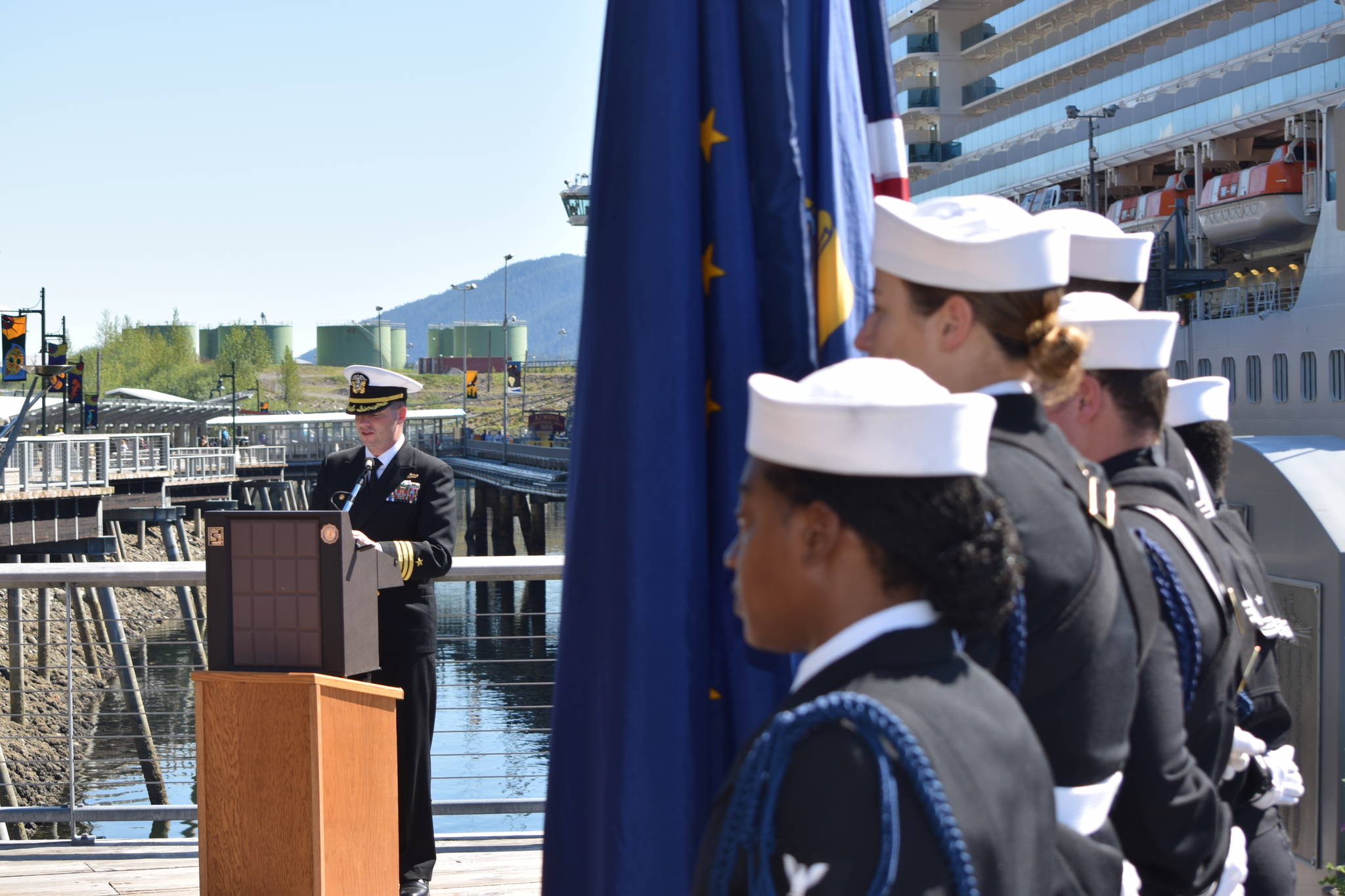Seventy-five years after sinking in the Battle of Guadalcanal, the U.S.S. Juneau still affects how the Navy operates.
When the ship went down in 1942, taking the five Sullivan brothers with it, it changed forever how the Navy places siblings.
With the USS O’Kane visiting town for the week, Commanding Officer Colby Sherwood reminded a crowd of about 50 of the importance of the capital city’s namesake ship at a commemorative “laying of the wreath” for the USS Juneau on Wednesday.
“Their entire family, lost. Five sons. There was no more of that family. That changed the way the Navy was going to allow sailors to take positions,” Sherwood said.
The ceremony took place at Juneau’s memorial site for the ship, a concrete memorial adorned with a plaque and flag a few minutes walk south of the Mount Roberts Tramway.
The USS Juneau, the first war vessel named after an Alaska city, was christened by the wife of Juneau’s then-mayor, Harry I. Lucas, in 1941 in New Jersey.
When taking part in the Battle of Guadalcanal, the Juneau was hit by two torpedoes from the Imperial Army of Japan on Nov. 13, 1942. Suffering catastrophic damage, the ship sunk in just 20 minutes, taking the lives of 600 of its 700 men with it.
The 100 left stranded suffered from dehydration, exhaustion and predation from sharks in the eight days they waited for rescue. Only 10 survived. It is considered one of the largest losses of life in a single event in U.S. Navy history.
Attending the ceremony was 89-year-old Steve Sztuk. Sztuk, pronounced “stuck” is an “old SOB,” in his words; he’s one of Juneau’s fast-shrinking corps of World War II veterans.
He doesn’t remember as much as he used to about the era, but small things still stick with him, among them that the U.S.S. Juneau was “a beautiful ship.”
The last remaining survivor of the U.S.S. Juneau, New Jersey native Frank Holmgren Sr., died in 2009.

